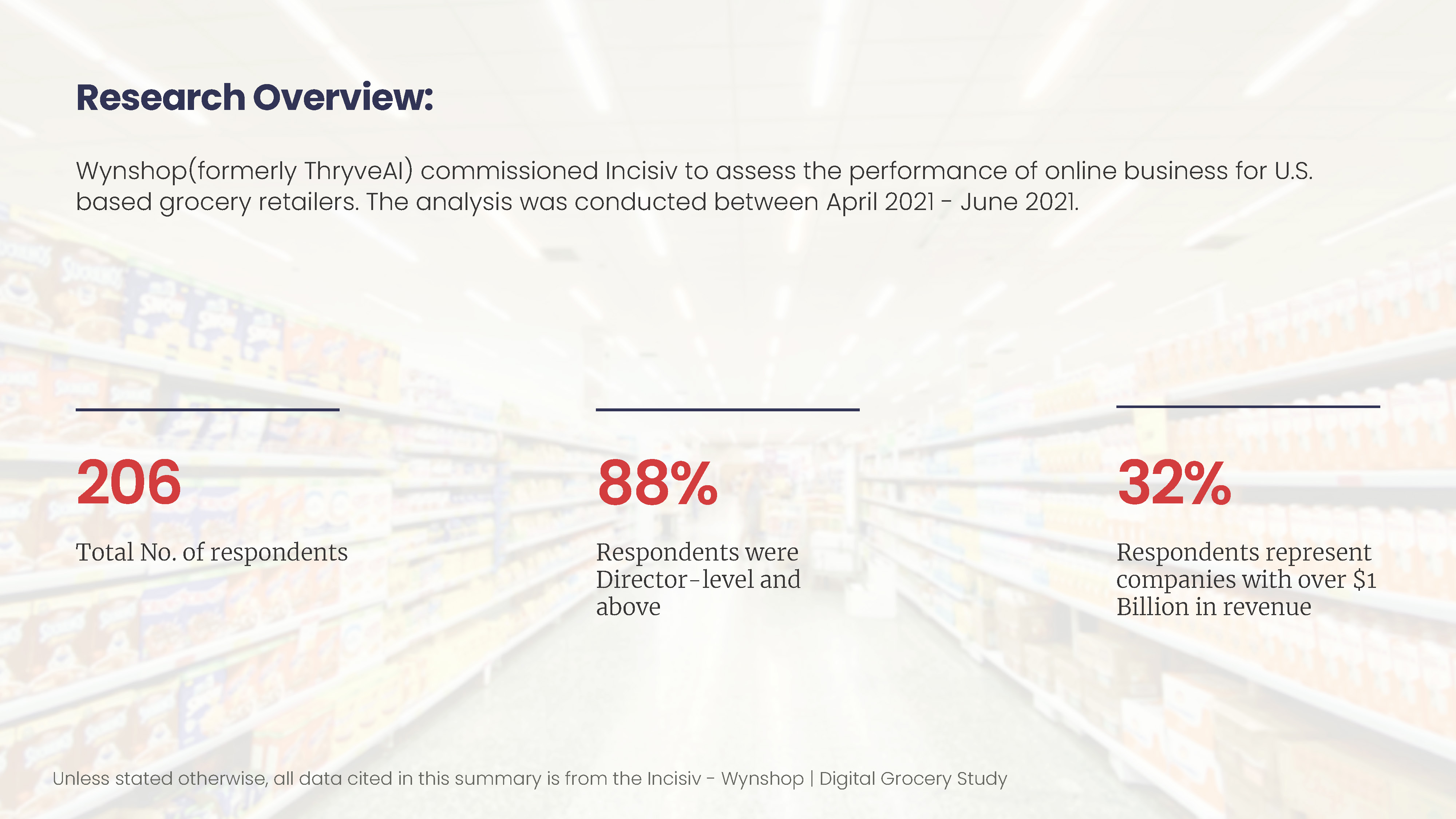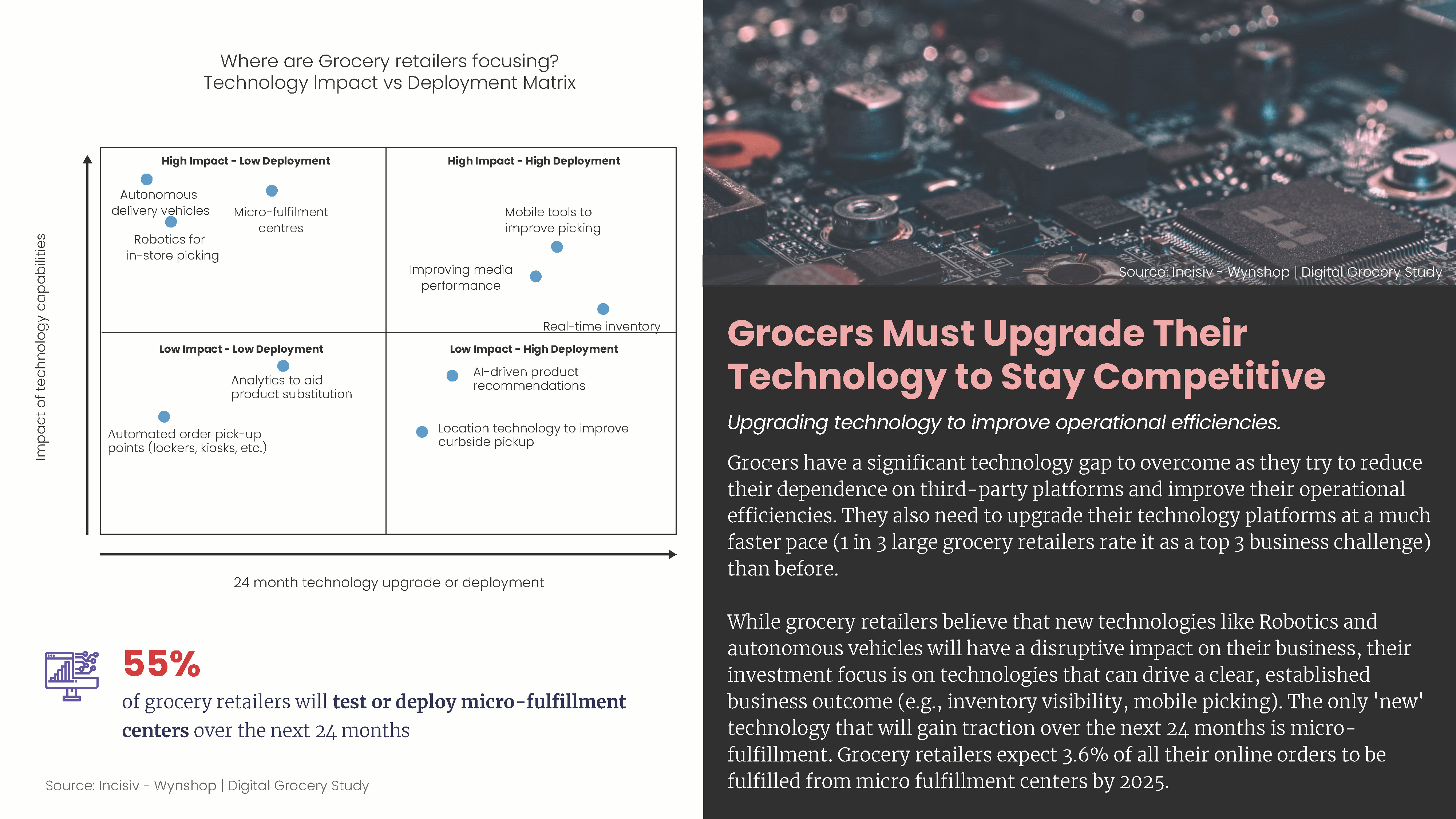Industry Perspectives
State of Digital Grocery: Growth at the Cost of Profitability
Q3, 2021
Grocery retailing is difficult. It's a complex business with low growth and meager margins. The rapid digital growth of 2020 may have been great for revenue (+9.5%), but retailers lost margin on online orders (-70%) and became a degree removed from their shoppers.
The path to profitability is clear, if not easy. Grocery retailers need to improve their operational efficiencies by fundamentally re-imagining their processes (e.g labor utilization, picking, delivery) and the underlying technologies (e.g micro-fulfillment) supporting them. They also need to take control of their digital commerce and experience, it's the best hedge against being disintermediated by third-party platforms. Owning the brand experience, and getting access to shopper data is the main revenue lever needed to improve basket economics.
FOUR KEY B2C COMMERCE IMPERATIVES
 Incisiv
Incisiv
Here’s a preview of the report. The full report is available for free download via the form below.






















As consumers continue to reshape their expectations,
enterprises must contend with a uniquely challenging landscape.
The consumer technology landscape is forever changing.
From Pinterest to TikTok, WeChat to Instagram, new experiences can rapidly gain consumer adoption and relevance.

From augmented reality to voice, smartwatches to chatbots, consumers are constantly embracing new interaction paradigms.
Commoditized convenience is eroding loyalty and margin.
Consumers expect convenience. If you can't deliver it, they'll go elsewhere - e.g. next day shipping becoming the new standard.
Walmart will reportedly lose USD 1 billion on eCommerce revenue of USD 21 billion this year as it faces challenges in its bid to complete against Amazon – from trouble integrating its DNVB acquisitions to impact on margin from its next-day delivery operations.
Consumers value experiences that are curated to fit their lives better.
They want to engage, be served, and transact at their time, their pace, their place. They have little patience, infinite choice and the freedom to swipe left at the slightest hint of friction.





